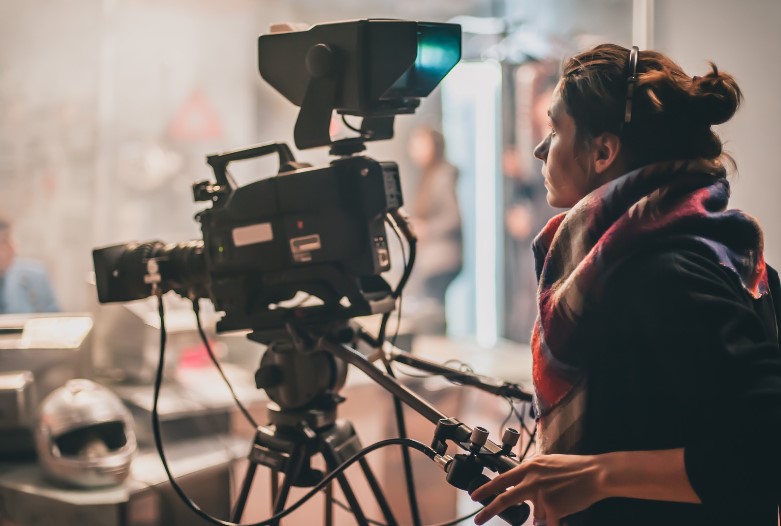The realm of filmmaking is an enchanting fusion of creativity, technical expertise, and storytelling. One of its most captivating aspects is cinematography—the art and science of capturing visuals that breathe life into a narrative. The cinematographer’s job is to translate the director’s vision into a cinematic reality, leveraging camera techniques, lighting, and composition to create a visually compelling story.
Stepping into the world of cinematography can be an exciting, albeit daunting endeavor. However, with passion, creativity, and a grasp of certain fundamental concepts, anyone can start their journey towards mastering this captivating art form. Here’s a guide to help beginners navigate the thrilling world of cinematography.
Understanding the Basics
The first step to mastering the art of cinematography is understanding its basic elements—composition, lighting, camera angles, and movement. Familiarizing oneself with these components is crucial as they form the building blocks of every shot.
Experiment with Composition
Composition refers to the arrangement of elements within a frame. It guides the viewer’s eyes and influences their emotional response. Start by understanding the rule of thirds, leading lines, and symmetry, and gradually explore more advanced concepts like the golden ratio.
Mastering Lighting
Lighting sets the mood and atmosphere of a scene. By manipulating light, a cinematographer can evoke emotions and emphasize important narrative elements. Beginners should learn the different types of lighting (key, fill, and back), and understand how to balance them for various effects.
Choosing the Right Camera Angle
The camera angle can dramatically alter the perception and impact of a scene. For instance, a low-angle shot might portray a character as dominant, while a high-angle shot could convey vulnerability. Understanding and experimenting with various camera angles can enrich your visual storytelling.
The Art of Camera Movement
The movement of the camera adds dynamism to a scene. From pans and tilts to tracking shots and crane shots, there’s a myriad of techniques to explore. Each brings a unique dimension to a shot and can be used to reveal information, follow action, or create a particular mood.
Dive into Color Theory
Color plays a vital role in cinematography, influencing the viewer’s emotions and highlighting narrative themes. Understanding color theory can help you use color effectively in your shots. Familiarize yourself with concepts like color harmony, contrast, and the psychological effects of different colors.
The Importance of Continuity
Continuity ensures the logical progression of shots and scenes. It includes maintaining consistent lighting, positioning, and details from shot to shot, which is crucial for maintaining the viewer’s immersion in the story.
The leap from basic cinematography to professional-grade commercial cinematography involves enhancing your skills and understanding of these elements. However, the journey doesn’t end here. There are a few more steps you can take to hone your craft.
Keep Learning and Practicing
Cinematography, like any other art form, requires continuous learning and practice. Attend workshops, study the work of renowned cinematographers, and always be open to feedback. Remember, every shot you take is a learning opportunity.
Master Post-Production Techniques
Post-production plays a significant role in achieving the final look of a film. It involves color grading, special effects, and editing. Having a good grasp of these processes will make you a well-rounded cinematographer.
Build a Network
Networking is essential in the film industry. Attend film festivals, join online communities, and collaborate with other filmmakers. These relationships can open up opportunities and provide valuable insights into the industry.
Stay Updated with Technology
In the ever-evolving world of cinematography, technological advancements are constant. Keeping up-to-date with these changes is critical to maintaining relevance in the industry. Whether it’s the latest camera model, a new piece of editing software, or innovative filming equipment, strive to stay informed and adept at utilizing these new tools. Moreover, don’t shy away from experimenting with technology to achieve unique visual effects or improve your workflow efficiency.
Develop a Personal Style
While learning and adhering to the conventional rules of cinematography is important, developing a personal style can set you apart in this competitive industry.
Your style is a reflection of your creative sensibilities, your interpretation of the world, and how you choose to visually convey it. Experiment with different techniques, styles, and narratives until you discover what resonates with you. Having a distinct style can help you leave a memorable impact on your audience and allow your work to stand out.
Final Words on the Art of Cinematography
Mastering the art of cinematography involves understanding its technical and aesthetic aspects, staying updated with advancements, and developing a personal style. This journey requires passion, commitment, and a never-ending curiosity to learn and experiment.
Whether you dream of filming documentaries, indie films, or engaging in commercial cinematography, remember that every frame is an opportunity to tell a story. So pick up your camera, start exploring, and let the world see your unique perspective.
Read Next:
How To Become A Freelance Video Editor – A Complete Guide








